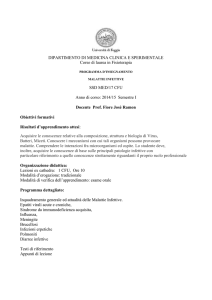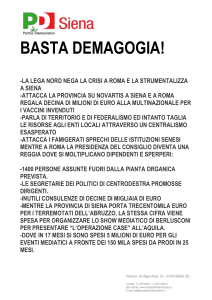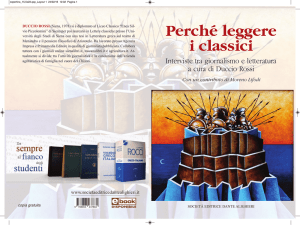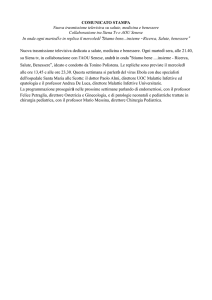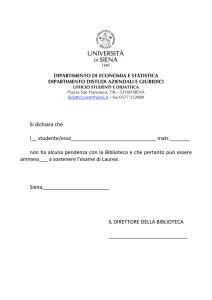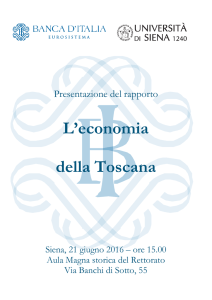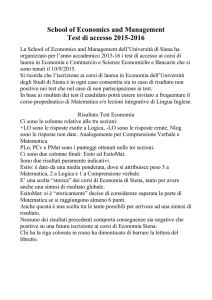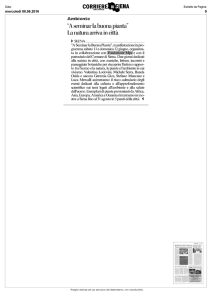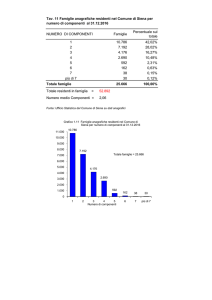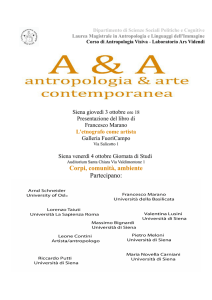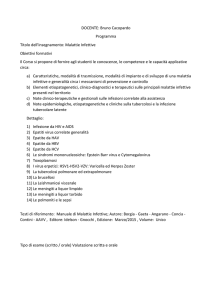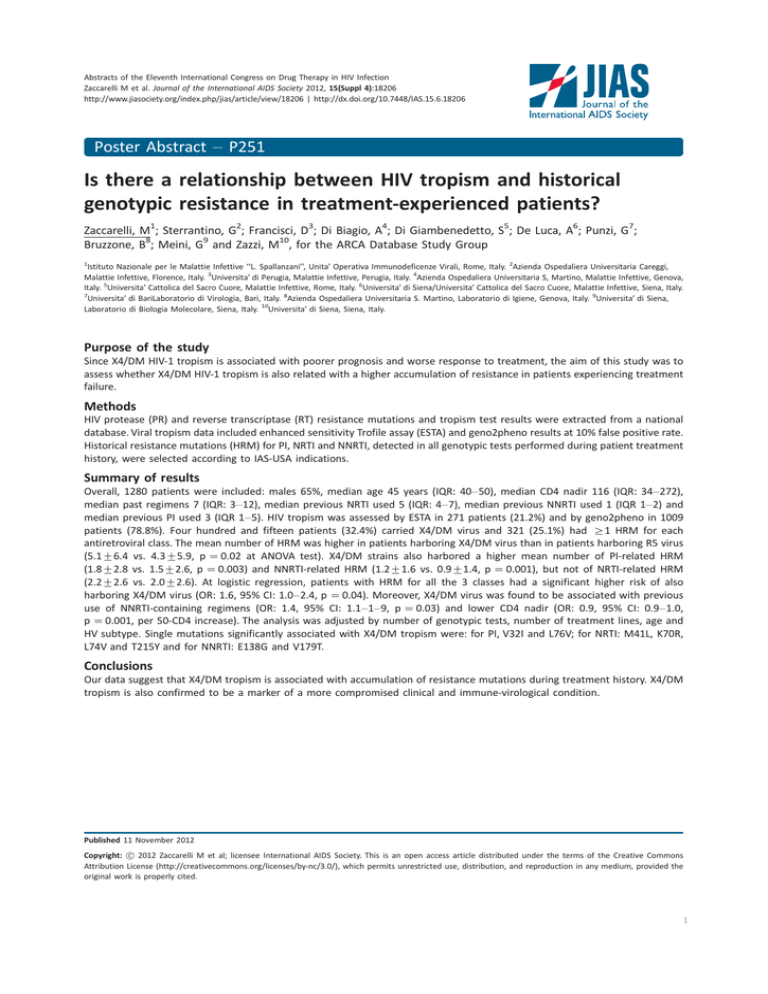
Abstracts of the Eleventh International Congress on Drug Therapy in HIV Infection
Zaccarelli M et al. Journal of the International AIDS Society 2012, 15(Suppl 4):18206
http://www.jiasociety.org/index.php/jias/article/view/18206 | http://dx.doi.org/10.7448/IAS.15.6.18206
Poster Abstract P251
Is there a relationship between HIV tropism and historical
genotypic resistance in treatment-experienced patients?
Zaccarelli, M1; Sterrantino, G2; Francisci, D3; Di Biagio, A4; Di Giambenedetto, S5; De Luca, A6; Punzi, G7;
Bruzzone, B8; Meini, G9 and Zazzi, M10, for the ARCA Database Study Group
1
Istituto Nazionale per le Malattie Infettive ‘‘L. Spallanzani’’, Unita’ Operativa Immunodeficenze Virali, Rome, Italy. 2Azienda Ospedaliera Universitaria Careggi,
Malattie Infettive, Florence, Italy. 3Universita’ di Perugia, Malattie Infettive, Perugia, Italy. 4Azienda Ospedaliera Universitaria S, Martino, Malattie Infettive, Genova,
Italy. 5Universita’ Cattolica del Sacro Cuore, Malattie Infettive, Rome, Italy. 6Universita’ di Siena/Universita’ Cattolica del Sacro Cuore, Malattie Infettive, Siena, Italy.
7
Universita’ di BariLaboratorio di Virologia, Bari, Italy. 8Azienda Ospedaliera Universitaria S. Martino, Laboratorio di Igiene, Genova, Italy. 9Universita’ di Siena,
Laboratorio di Biologia Molecolare, Siena, Italy. 10Universita’ di Siena, Siena, Italy.
Purpose of the study
Since X4/DM HIV-1 tropism is associated with poorer prognosis and worse response to treatment, the aim of this study was to
assess whether X4/DM HIV-1 tropism is also related with a higher accumulation of resistance in patients experiencing treatment
failure.
Methods
HIV protease (PR) and reverse transcriptase (RT) resistance mutations and tropism test results were extracted from a national
database. Viral tropism data included enhanced sensitivity Trofile assay (ESTA) and geno2pheno results at 10% false positive rate.
Historical resistance mutations (HRM) for PI, NRTI and NNRTI, detected in all genotypic tests performed during patient treatment
history, were selected according to IAS-USA indications.
Summary of results
Overall, 1280 patients were included: males 65%, median age 45 years (IQR: 4050), median CD4 nadir 116 (IQR: 34272),
median past regimens 7 (IQR: 312), median previous NRTI used 5 (IQR: 47), median previous NNRTI used 1 (IQR 12) and
median previous PI used 3 (IQR 15). HIV tropism was assessed by ESTA in 271 patients (21.2%) and by geno2pheno in 1009
patients (78.8%). Four hundred and fifteen patients (32.4%) carried X4/DM virus and 321 (25.1%) had ]1 HRM for each
antiretroviral class. The mean number of HRM was higher in patients harboring X4/DM virus than in patients harboring R5 virus
(5.196.4 vs. 4.395.9, p 0.02 at ANOVA test). X4/DM strains also harbored a higher mean number of PI-related HRM
(1.892.8 vs. 1.592.6, p 0.003) and NNRTI-related HRM (1.291.6 vs. 0.991.4, p 0.001), but not of NRTI-related HRM
(2.292.6 vs. 2.092.6). At logistic regression, patients with HRM for all the 3 classes had a significant higher risk of also
harboring X4/DM virus (OR: 1.6, 95% CI: 1.02.4, p 0.04). Moreover, X4/DM virus was found to be associated with previous
use of NNRTI-containing regimens (OR: 1.4, 95% CI: 1.119, p 0.03) and lower CD4 nadir (OR: 0.9, 95% CI: 0.91.0,
p 0.001, per 50-CD4 increase). The analysis was adjusted by number of genotypic tests, number of treatment lines, age and
HV subtype. Single mutations significantly associated with X4/DM tropism were: for PI, V32I and L76V; for NRTI: M41L, K70R,
L74V and T215Y and for NNRTI: E138G and V179T.
Conclusions
Our data suggest that X4/DM tropism is associated with accumulation of resistance mutations during treatment history. X4/DM
tropism is also confirmed to be a marker of a more compromised clinical and immune-virological condition.
Published 11 November 2012
Copyright: – 2012 Zaccarelli M et al; licensee International AIDS Society. This is an open access article distributed under the terms of the Creative Commons
Attribution License (http://creativecommons.org/licenses/by-nc/3.0/), which permits unrestricted use, distribution, and reproduction in any medium, provided the
original work is properly cited.
1

